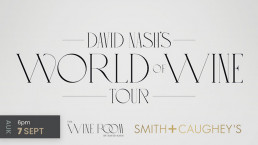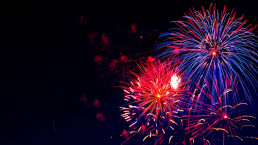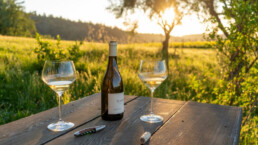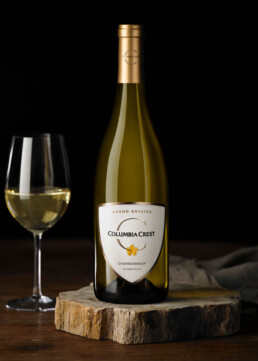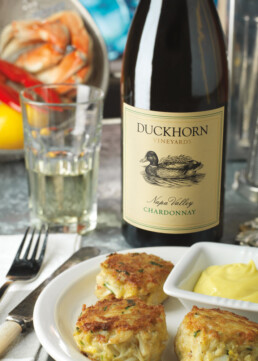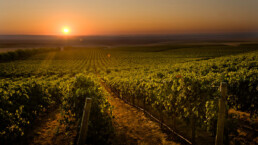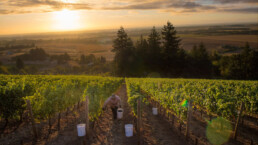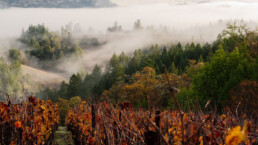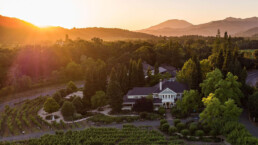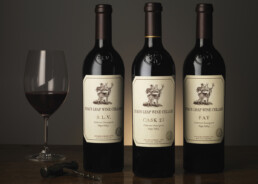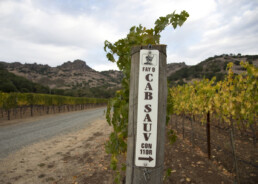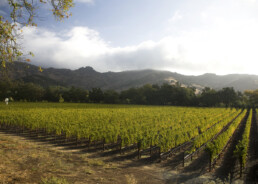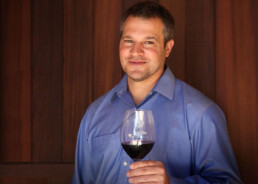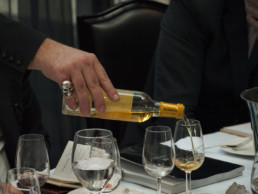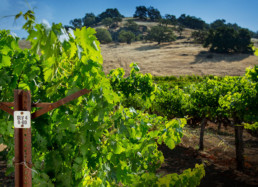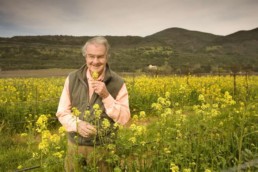David Nash's World of Wine Tour @ The Wine Room, Smith & Caughey's
A Hosted Tour of The Great Wine Regions of The World.
Join fine wine curator and master storyteller David Nash, alongside regional experts as they take you on a world tour from Champagne to Tuscany to Napa all from the comfort of The Wine Room at Smith & Caughey's Auckland.
Taste regional benchmarks, learn from the experts and take advantage of special offers on the night exclusively for ticket holders, including 10% off wines purchased during the event (while stocks last, please note Champagne and Spirits are excluded from the discount, unless otherwise stated.).
Join the standing, free-flowing event at The Wine Room by David Nash, with canapés to match.
• Champagne by Veuve Clicqout
• French wines from Burgundy to Bordeaux with specialist, Alex Hoinville
• Italian wine ambassador, Marco Nordio shares his favourite wines
• and our own Melissa Csigay, with iconic Californian pours including:
- Francis Ford Coppola Diamond Collection Zinfandel
- Cristom Vineyards Willamette Valley Pinot Noir
- Duckhorn Vineyards Napa Valley Merlot
- Stag's Leap Wine Cellars Karia Chardonnay
- Stag's Leap Wine Cellars Hands of Time
Register today: Eventbrite
$99 per person
Thursday 6pm, 19 October 2023
The Wine Room by David Nash is located at Smith & Caughey's, Queen Street, Level 2.
A strictly R18+ event. Please drink responsibly.
Wave the Flag - it's the 4th of July
Wave the Flag - it's the 4th of July
12 Star-Spangled Awesome American Wines for Independence Day

It’s the 4th of July just around the corner — yessiree, Happy Birthday, America! — so what better way to celebrate than with a few fabulicious American wines.
Proudly, right from our earliest days, Dhall & Nash understood the bounty and calibre of American wines. We were amongst the first in NZ to hitch our wagon to the vinous rockstars of USA.
Our super selection from the great states of California, Oregon, and Washington is now considered to be as jaw-dropping as any 4th July fireworks display.
And what better way to celebrate with a full stars and stripes experience, than to team these wondrous wines with some All-American recipes for you’all to chow down for your Independence Day blow-out bashes.
Arguably the most famous 4th of July food tradition is the all-American barbecue, which brings many American families and friends together around a grill, not too dissimilar to our Kiwi Barbie!
When we think of the perfect 4th of July menu, there’s a few things that come to mind. You’ve gotta have the classics, like burgers and hot dogs, ribs, and potato salads, of course, but let’s do a little kiwi-Americana mash-up to add some pizazz to your festive BBQ menu. Here’s some Dhall & Nash Independence Day inspiration! Have fun!
We hope there’s something in our selection that’s tickled your tastebuds… if not search through our extensive wine catalogue for your perfect American wine – red, white, and blue-chip.
Cheeky Disclaimer – our D&N food and wine pairing “truth” is, you can eat pretty much whatever you want while drinking whichever wine you choose. So here’s some of our suggestions – but you go for it whichever way you darn well want!
Chili Dogs
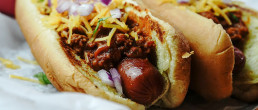
- 1 Can of Whole Tomatoes,
- 1 tbsp. Chili Powder,
- 2 tsp. Ground Cumin,
- 1 medium Red Onion (finely chopped),
- 4 Tbsp Tomato Paste,
- Black Pepper & Salt to taste
- 500g. Ground Mince
- 4 Hot Dogs
- 4 Hot Dog Buns
- 1 cup. Grated Sharp Cheddar,
- 4 Good quality Pickles
Place the tomatoes, paste and their juices in a large casserole pot or slow cooker, breaking them up as you add them. Stir in the chili powder, cumin, all but 3 tablespoons of onion, and 1/2 teaspoon pepper; keep the remaining red onion for the top of hot dogs at the end.
Add the beef, break it up and stir to combine. Cook, covered, until the meat is cooked through, and liquid begins to reduce, about an hour (Or longer if you want a thicker sauce).
Fifteen minutes before serving, add the hot dogs to the top of the slow cooked mince and simmer, covered, until heated through. Divide the hot dogs among the buns and top with the chili, Cheddar, and remaining chopped onion. Serve with pickles, if desired.
First up to bat is the quintessential American Chilli Dog. We’ve paired this family fave with a Washington State dark-fruited Syrah. Equally as scrumptious, try this Hot dawg with the Cali classic Petite Sirah. It’s hard to beat California when it comes to PS that’s dangerously drinkable like this! Both these wines have flavours enhanced by bold spices like chili pepper, cumin, and rich tomato.
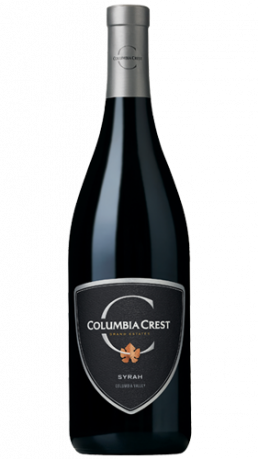
Columbia Crest Syrah 2019
“The aromas are unmistakably Syrah, with notes of plum and smoked meat. Plump, very primary fruit flavors follow, with a creamy feel from the barrel. It’s tasty and a good value to boot.”
89/100 points – Wine Enthusiast
“Good typicality – violet and blackberry with plush notes. Nice expression of Syrah layered and structured tannins. On the sweet side but packed full of fruit and spice. Well made, very commercial and good value”
16/20 points – Jancis Robinson.com
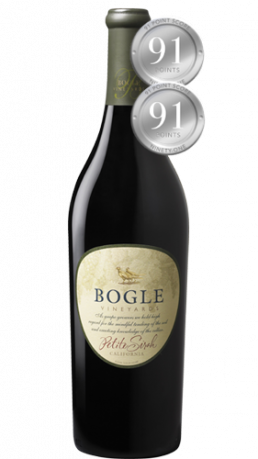
Bogle Petite Sirah 2018
Although everyone adores Bogle Chardy, their reds are awesome too! But don’t confuse this with Syrah; although they are related, genetically being a cross between Syrah & Peloursin – and btw it also goes by the name “Durif” in France.
“As deep as black hair dye in colour. Sweet clove spice on the nose. Very ripe fruit, but it doesn’t meld with the oak particularly well. Long, sweet-fruited finish. Not without a certain charm, but in a very loud-mouthed way.”
16/20 points – JancisRobinson.com
“Delicious blackberry, blueberry and dark-chocolate flavors are wrapped in thick but soft tannins. This is a full-bodied wine, with a mouthcoating texture.”
91/100 points – Wine Enthusiast
Buffalo Wings
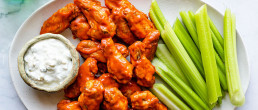
- 1kg chicken nibbles
- 3 Tbsp butter, melted
- 4 Tbsp your favourite Hot Sauce
- 1 Tbsp paprika (smoked is best)
- 3 Tbsp brown sugar
- 1/2 teaspoon salt
- 1/4 teaspoon black pepper
Marinate the chicken nibbles for 30mins and either bake in the oven or BBQ. Be sure to reserve some of the marinade to baste the chicken. Pair these with Blue Cheese Dip.
Hot tip – how to make ultra-crispy Buffalo Wings in the Oven… Here’s 2 cheeky secrets to follow:
- Baking powder (believe it or not – yes!) – pat dry your wings, then toss the wings in baking powder which draws moisture to the surface of the skin and helps make it crispy; and
- bake on low then high – usually, the fat under the skin is part of the reason why baked wings don’t get really crispy. So, the secret is to start at a low temp first which melts the fat under the skin, then crank up the oven at the end which makes the skin super crispy!
- Blue Cheese Dip
- 1/2 cup sour cream
- 1/2 cup crumbled blue cheese
- 1/2 cup mayonnaise
- 1 Tbsp white wine vinegar
- 1 clove garlic, mince
Blend all the ingredients and scrape into a serving bowl.
To serve – arrange the wings on a platter, add a side of the dip and serve with CELERY sticks – yes, it’s like the perfect way to reboot your taste buds in between each wing!! And remember, plenty of paper towels for sticky fingers.
The conventional wisdom is that Pinot Noir pairs best with duck or mushrooms, but this grape is surprisingly versatile and will match a big range of different foods. Hence, we decided these two pinots will rock with old fashioned Buffalo Wings – who doesn’t love ’em. Even though they’re just kind of messy to eat, they’re totally worth it ☺ Btw – did you know that Buffalo wings are so called because they were first created in Buffalo, New York and definitely not made from buffalo meat!?
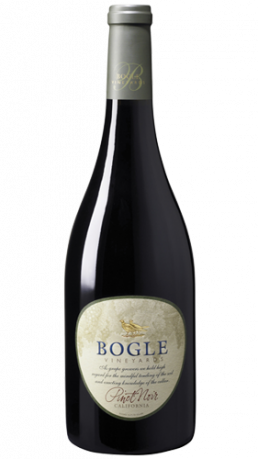
Bogle Pinot Noir 2020
On the 2019 vintage: “Rich black-fruit notes fill the aromas and flavors of this saturated and full-bodied wine. Gorgeous black cherry and blueberry flavors are wrapped in fine-grained tannins for a mouth filling effect.”
91/100 points – Wine Enthusiast
Voted #6 TOP 100 BEST BUY of 2021 Wine Enthusiast Magazine
“Heady scents of ripe summer strawberries make a lovely first impression, while hints of crushed violets and sweet dried herbs resonate on the nose. Refined and nuanced, the mouthfeel softens as layers of cherry fruit are wrapped in a comforting blanket of pipe tobacco and worn leather. The firm, yet lingering finish is perfectly balanced with touches of baking spices, fragrant fruit, and earth tones.” – Winery Notes (This is an elegant, classic Pinot Noir at an extremely wallet friendly price!).
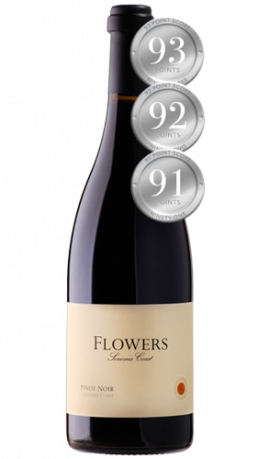
Flowers Sonoma Coast Pinot Noir 2019
“The 2019 Pinot Noir Sonoma Coast is deeper ruby-hued and has pure, classic, textbook notes of ripe cherries, raspberries, spring flowers, and underbrush. The balance is spot on, it has ripe, present tannins, good freshness, and a great finish.”
93/100 points – Jeb Dunnuck
Cheesy Cornbread
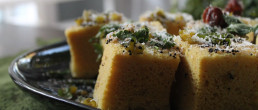
- 1 Cup yellow cornmeal (instant polenta ok)
- 1 Cup all-purpose flour
- 4 Tbsp sugar
- 4 tsp baking powder
- ½ tsp chilli powder
- ½ tsp salt
- 1 Cup milk or plain yoghurt
- 1 large egg
- 1/3 Cup canned roasted red peppers, drained & chopped
- 1 Cup grated cheese
- ¼ Cup finely chopped fresh parsley
- ¼ Cup cooking oil
Preheat the oven to 200 Celsius and coat the inside of a 14x21cm loaf pan, large muffin tins, or a traditional cast iron skillet with non-stick spray (or butter for more flavour).
In a large bowl, stir together the cornmeal, flour, sugar, baking powder, and salt until evenly combined. In a separate bowl, whisk together the milk, egg, cheese, roasted red peppers, and oil.
Pour the bowl of wet ingredients into the bowl of dry ingredients and stir just until everything is moist. Avoid over stirring. It’s okay if there are a few lumps.
Pour the batter into the prepared loaf pan and bake for about 20 minutes, or until the top and edges are golden brown. Serve warm with lashings of butter.
Another perennial American rock star has to be Californian Chardonnay. The cosy and buttery flavours in cornbread mirror those in creamy oaked chardonnay for a match made in wine-and-food heaven.
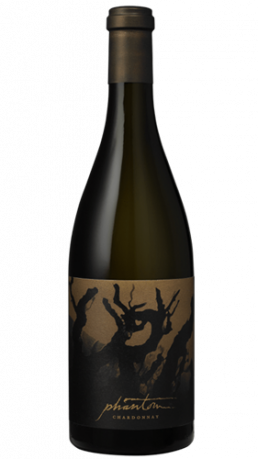
Bogle Phantom Chardonnay 2019
“…entices with its rich layers. Green apple and pear transform into spicy flavors of freshly baked apple pie, while barrel fermentation imparts a creamy, luscious mouthfeel. French oak whispers sweet notes of vanilla and melted caramel.”
92/100 points & Gold Medal awarded – Sunset International Wine Competition 2021
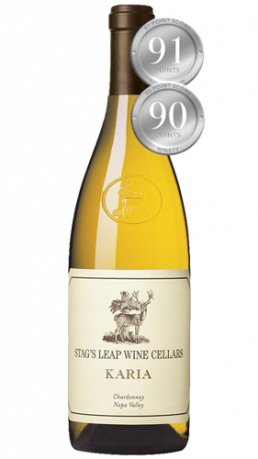
Stag’s Leap Karia Chardonnay 2018
“This is an opulent, structured, and mineral-driven white wine, richly layered and robustly built with weight and ample body. Brioche, honeycomb, and baked apple meet a complement of fresh acidity and a lasting note of stone.”
91/100 points – Wine Enthusiast
“The 2018 Chardonnay Karia comes from a selection from throughout the valley and offers a light gold color as well as a rich, well oaked, buttery style that includes attractive orchard fruits, white flowers, vanilla, and spice-driven aromas and flavors. It has good acidity as well and is balanced and medium-bodied, all making for a certainly delicious Chardonnay geared for near-term drinking.”
90/100 points – Jeb Dunnuck
Cowboy Beans
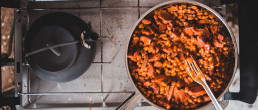
- 4 cans of Pinto beans, (or a mix of Red kidney, Black Beans or White beans – drained of liquid)
- 1 tablespoon bacon fat
- 1 tablespoon vegetable oil
- 1 medium yellow onion, chopped
- 5 cloves garlic, minced
- 1 smoked ham hock
- 2 cups water
- Salt, to taste
- 2 cups brewed coffee
- 1 1/2 cups tomato-based barbecue sauce
- 1/4 cup chopped pickled jalapenos for garnish
- Grated cheddar or similar cheese for garnish, optional
- 1/4 cup chopped red onion for garnish
Heat the bacon fat and the vegetable oil in a Dutch oven or other heavy-bottomed lidded pot over medium-high heat.
Add the onion and sauté for 3 minutes, stirring often, until translucent and just beginning to brown.
Add the garlic and sauté for another 1 to 2 minutes.
Place the drained beans into the pot with the onions. Add the ham hock, the water, a little salt, and the coffee. Stir and bring to a simmer. Cook for about 1 hour. The beans should be soft enough to chew but not mushy soft.
Add the barbecue sauce and stir to combine. Cover and simmer on low heat until the meat from the ham hock begins to separate from the bone.
After an hour, check on the beans every 15 minutes. If the beans begin to break down, remove from heat. When the beans are done cooking, pull out the ham hock and strip the meat from the bone. Add the meat to the beans and discard the bone.
Add salt to taste. Add pickled jalapeños to taste for some heat, if desired. Serve with a little grated cheese and chopped red onion on top.
We’re going from the sublime to the ridiculous in this match up… the very classy super-smooth Duckhorn Three Palms Merlot juxtaposed against the very humble Cowboy Beans dish. But Merlot is a bit of a chameleon and because of this it is an easy match with a wide range of foods. Its dry, natural acidity combined with ripe red fruit flavours and leafy aromas make it an ideal pairing for full flavoured dishes. Not to mention silky tannins and a soft smooth finish make this bad boy combo a taste sensation.
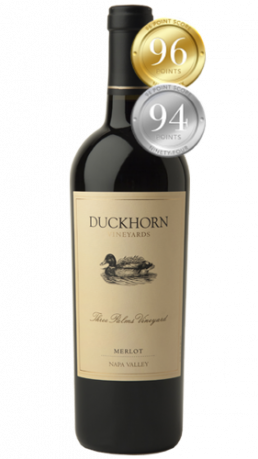
Duckhorn Three Palms Merlot (Napa Valley) 2018
“Elegantly structured and featuring concentrated cherry tart and raspberry pastry flavors that are loaded with toasty richness. Creamy and spice-filled finish is backed by firm acidity and tannins”
94/100 points – Wine Spectator
As a testament to its status as the benchmark for New World Merlot, in 2017, the Wine Spectator honoured the 2014 Three Palms Vineyard Merlot as “Wine of the Year.”
“The Cathedral of Merlots, with imposing structure and a towering presence – a sheer joy to drink. Drinking Window 2021 – 2035”
96/100 points – Decanter
Once again, the famed Three Palms Vineyard has yielded a fascinating and luxuriously full-bodied Merlot. Aromas of huckleberry, black cherry, chocolate, and fig rise from the glass, followed by hints of graphite, graham cracker, bay leaf and sage. On the mouth-watering palate the flavors are intense and complex, with velvety tannins and voluptuous fruit balanced by earthy undertones and Three Palms’ classic minerality, all of which carry the wine to a rich and remarkably long finish. Blend: 89% Merlot, 7% Cabernet Sauvignon, 3% Cabernet Franc, 0.5% Petit Verdot, 0.5% Malbec (Winery notes)
There’s a Secret Ingredient in Cowboy Beans. Its Coffee! Legend has it that back in the day, cowboys added leftover coffee to their pot of beans because fresh water was not so easy to come by—a cowboy version of waste not, want not. Coffee adds a depth of flavour and a slight bitterness that keeps the sweet-spicy of the barbecue sauce in line.
Two-Step Texan Ribs
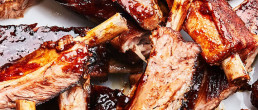
- 1 Tbsp onion powder
- 1 tsp smoked paprika
- 1 tsp ground cumin
- 1 tsp celery salt
- 1/2 tsp black pepper
- 1 Tbsp brown sugar
- 2 Kgs pork baby back ribs
- 1 Cup of your favourite barbecue sauce
Preheat oven to 200 degrees C
In a small bowl, combine paprika, onion powder, cumin, celery salt, pepper, and brown sugar; rub seasoning mixture over ribs. Place each rack of ribs on a large piece of aluminium foil. Wrap foil securely, leaving room for steam to circulate, seal edges tightly. Place foil packets on a baking sheet.
Bake 2 hours, or until meat is fork-tender. Open packets carefully, as steam may be released. Brush ribs with barbecue sauce and place back in oven 15 to 20 minutes, uncovered, or until sauce starts to caramelize.
Zinfandel wine is happiest when paired with anything from the meat aisle, from barbeque pork ribs, leg of lamb or a big, hearty meal. And it loooves spice! Here’s our D&N team favourite:
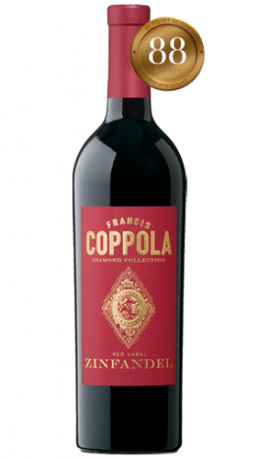
Francis Ford Coppola Diamond Collection Zinfandel 2018
The bouquet reveals lush aromas of freshly picked blackberries, raspberries, and a hint of star anise. The palate is pampered by juicy plums, black cherries and freshly ground white pepper. Sourced from old vines in Amador County and cooler sites in Paso Robles and Sonoma, this wine comprises approx.90% Zinfandel with 10% Petite Sirah and was matured 10 months in French oak. The Petite Sirah further enhances the luscious strawberry jam, cassis and briar flavours that follow its perfume of dark fruit, sweet spice, and toasty vanilla. (Winery notes)
Slow Cooker Beef Brisket
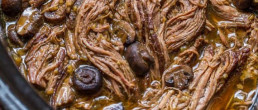
- 3 Tbsp Olive oil to sauté, divided
- 2 kgs beef brisket
- 2 tsp salt and 1 tsp black pepper, or to taste
- 2 medium yellow onions, sliced into thick strips
- 500g mushrooms, thickly sliced (leave some whole if you prefer)
- 6 medium garlic cloves, peeled and chopped (not pressed) *
- 2 cups chicken or beef broth/stock (or for fun an American-style pale ale)
- 2 1/2 Tbsp Worcestershire sauce
Generously season brisket with about 2 tsp salt and 1 tsp black pepper. Heat a large heavy skillet or cast-iron pan over high heat. Add 1 Tbsp olive oil and when hot, add brisket (fat side down). Sear 4-5 minutes per side or until browned on both sides. Transfer to slow cooker with the fat side facing up.
In the same pan, add 1 Tbsp olive oil and sliced onions. Sautee 5-7 minutes or until onions are caramelized. Place onions over brisket. In the same pan, add more oil as needed and sauté mushrooms until softened (5 min). Place mushrooms into the slow cooker. Sprinkle chopped garlic over the mushrooms. Combine 2 cups chicken broth with 2 1/2 Tbsp Worcestershire sauce and pour mixture over the meat.
Cover and cook on low 7 to 8 hours or until cooked through and easy to pull apart with forks. Turn off slow cooker and rest for 15 minutes with the lid on. Remove and discard excess fat from the top then pull the beef apart with forks and keep it in the slow cooker to soak up the juices which will add incredible flavor and keep the meat tender. Serve beef brisket and mushrooms, spooning the slow cooker brisket juices over the top.
***Cheeky trick to use the Beef Brisket as a burger filling – finish it off on the BBQ! When the brisket is tender but before the pull-apart stage, remove from the roasting pan or casserole. Oil the already medium hot BBQ grill. Place beef on the grill and brown on both sides. Baste the beef generously with BBQ Sauce turning and basting both sides. Continue to do this until there is a nice, caramelised glaze on the brisket. You can then serve inside a burger bun with all the fixings & with extra BBQ sauce on the side. Boom! Multi-purpose brisket – yummo!
American Cabernet Sauvignon is a food-world favourite, and it’s easy to see why. Its tannic structure, coupled with its red- and black-fruit flavours compliment hearty dishes perfectly.
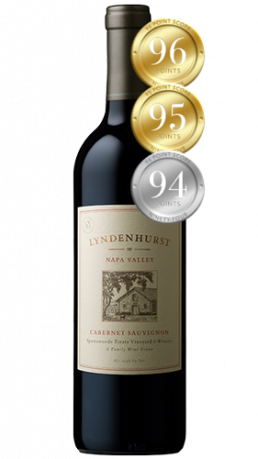
Spottswoode Lydenhurst Cabernet Sauvignon 2018
“A wine well worth purchasing and cellaring, the 2018 Cabernet Sauvignon Lyndenhurst sports a dense purple hue as well as classic Cabernet notes of blackcurrants, Asian spices, violets, licorice, and tobacco. Beautifully rich, full-bodied, and concentrated, it’s one heck of a second wine that can be drunk today or cellared for 15-20 years.”
94/100 points – Jeb Dunnuck
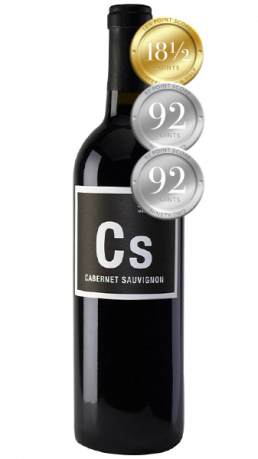
Wines of Substance Cabernet Sauvignon 2019
“Juicy blue fruits, leafy tobacco, violets, and orange blossom notes all emerge from the 2019 Cabernet Sauvignon Cs and it’s medium to full-bodied, has a beautifully balanced, fruit-forward style, no hard edges, and a great finish. It’s no simple fruit bomb and has notable structure, ripe tannins, and outstanding length. It reminds me of a top Cru Bourgeois from Bordeaux and represents a stunning value. Drink it over the coming 7-8 years.”
92/100 points – Jeb Dunnuck
“Currants, flowers, and walnuts on the nose. Medium-bodied with a pretty core of fruit and fine tannins and a crisp finish. Lead pencil. Fresh. Compact. Delicate and delicious. Enjoy.”
92/100 points – James Suckling
Mac-n-Cheese
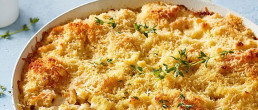
- 125 g Bacon, thick cut pieces rindless
- 2 cups Macaroni (Elbow or any short pasta)
- 50g Butter
- 3 Tbsp Flour
- 3 cups Milk
- ½ cup Cream
- 1 cup any tasty cheese, like gruyere, cheddar, etc. grated, plus 1/2 cup extra for topping
- ½ cup Breadcrumbs, white or panko
Heat the oven to 200C. Lightly grease a medium-sized oven-proof dish.
Lightly pan fry bacon pieces and set aside.
Cook the macaroni elbows in lightly salted boiling water according to the instructions on the packet, or until al dente. Drain and rinse under cold water to arrest the cooking and set aside.
In a medium-sized saucepan, melt the butter over a low heat. Stir in the flour to form a roux. Allow roux to bubble gently, stirring continuously until lightly golden. Remove from the heat, add milk and cream to the roux, and stir or whisk until well combined.
Return to the heat and stir continuously until the sauce is shiny and thick enough to coat the back of the wooden spoon. Remove from the heat, add the grated cheese and bacon lardons.
Stir cooked macaroni elbows through the sauce and season to taste with salt. Spoon into the dish.
Mix together the breadcrumbs and extra grated cheese and sprinkle over the macaroni cheese.
Place in the oven and cook for 15-20 minutes until golden and bubbling.
Actually, here in Godzone now, it’s too darn cold for the American 4th July classic Potato Salad or Coleslaw so we’re subbing in the all-time American fave Mac-n-Cheese. Easy to match with either a chardy or a warming red.
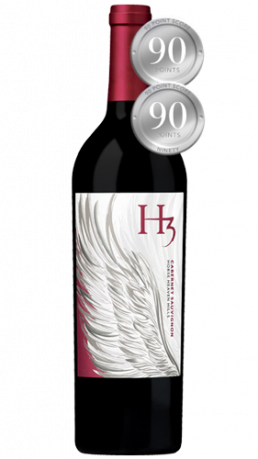
H3 Horse Heaven Hills Cabernet Sauvignon 2019
“Compared with previous vintages, the oak has been pulled way back here. The aromas of blackberry and plum show a bit of reduction. Lightly sweet plum flavors follow. The tannins give a light grip. There’s much enjoyment to be had.”
88/100 points – Wine Enthusiast
Chocolate Brownies with Raspberry ‘Pops’

- 125g unsalted butter, chopped
- 125g good quality Baking Dark Chocolate, chopped
- 3 eggs, lightly whisked
- 335g (1 1/2 cups) white sugar
- 115g (3/4 cup) plain flour
- 30g (1/4 cup) Dutch cocoa powder
- 1 tsp vanilla extract, Pinch of salt
Freeze-dried raspberry ‘crumbs’ as garnish with whipped cream (optional)
Preheat oven to 180C/160C fan forced. Grease a 20cm (base measurement) square cake pan and line with baking paper.
Place butter and chocolate in a heatproof bowl over a saucepan of simmering water (don’t let the bowl touch the water). Stir with a metal spoon until melted. Remove from heat. Quickly stir in egg, sugar, flour, cocoa powder, vanilla, and salt until just combined. Pour into prepared pan. Bake for 30 minutes or until a skewer inserted in the centre comes out with moist crumbs clinging. Set aside to cool completely.
And just because you can… why not top off your Independence Day partaaaay with the belle of the ball:
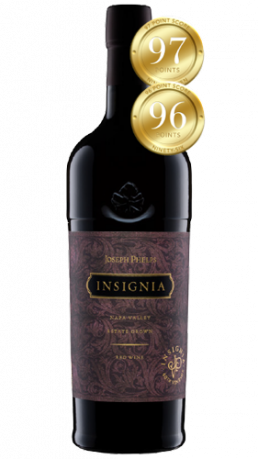
Joseph Phelps “Insignia” Napa Valley Cabernet Sauvignon 2017
“A beautiful, focused wine with a tight center palate of blackberries, blueberries, and dark chocolate. Very subtle. Hints of mint and sage, too. Medium to full body and fine, racy tannins. A reserved and very pretty Insignia. Fresh finish. Hard not to drink now, but better in 2022.”
96/100 points James Suckling
“The 2017 Insignia is beautiful stuff that excels in the vintage. Revealing a dense purple color as well as stunning notes of crème de cassis, lead pencil shavings, tobacco, and earth, it hits the palate with full-bodied richness, a silky, seamless texture, building tannins, and a great finish. It has the more linear, elegant style of the vintage, yet it’s balanced, has ample concentration, and is just a gorgeous wine that will evolve for 30 years or more.”
96/100 points – Jeb Dunnuck
COMING SOON!!!! The 2018 “Insignia”- 99 pts James Suckling; 98 pts Jeb Dunnuck; 97 pts Robert Parker’s Wine Advocate
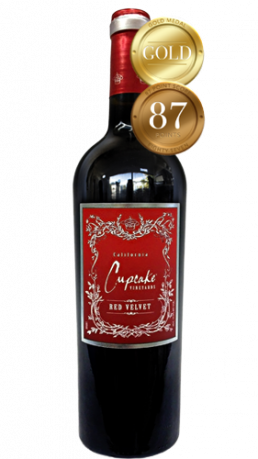
Finally, sweets time. It may seem counter-intuitive, but silky, velvety, and fruiti-licious wines can be chocolate’s best friend. And we love this combo of a rich red fruit forward blend with gooey dark chocolate brownies sprinkled with raspberries. Hmmmm!
Cupcake Red Velvet NV
A delightful blend of Zinfandel, Merlot, and Petite Sirah, sourced from the finest vineyards in California. “A very approachable style; the fragrant bouquet shows strawberry jam, raspberry, vanilla, cocoa, and cedar characters, leading to a supple palate that is fruity and smooth. The medium-full-bodied red is easy going with tasty flavours, finishing friendly and silky”
89 points – Sam Kim, Wine Orbit
HAPPY 4th JULY!
Focus On: Chardonnay - The American Dream
Focus On: Chardonnay - The American Dream
It’s as American as Mom’s apple pie.
Chardonnay is the wine people seem to love to hate. And yet, Chardonnay is still the most popular grape variety in the United States, and the most widely planted white wine grape around the world. It seems, for as much as Chardonnay may have its haters, hey, we’re talking about you guys – the “ABC” (Anything But Chardonnay) club – this world-famous grape is definitely having a major moment!
Globally Chardonnay has achieved a level of branding unlike any other wine. Surprisingly, though, what you get when you buy Chardonnay can differ greatly from country to country and even within one country as is the case in the vastness of the US. So much depends on many factors – such as on the microclimate where it’s grown, the terroir, when it’s picked, how it is vinified and aged, and more!
The diversity is apparent where in the cool climate regions Chardonnay tends to be fresh, crisp and minerally with apple, stone fruit, and lemon notes compared to the warm climate characters of rich and buttery with tropical fruit overtones. Chardonnay definitely runs the gamut.
Luckily for us at Dhall & Nash, we are spoilt for riches when it comes to a variety of super sexy American Chardonnays. We have hung our hat on this from our early days of importing the luscious and ever-popular Coppola and Bogle wines. Now it is time to Focus On a few other ample beauties from our American collection.
Whether oaked or unoaked, Chardonnay is a white wine that is just as perfect on a beach in the summer as it is relaxing by the fire in the winter. Yet as much as we love or hate Chard, there’s still a lot that many of us don’t know about it which is really doing a disservice to this noble grape variety. Time now to see how American Chardonnays have come of age.
A 'Dolly Parton', An 'Audrey Hepburn' or an 'Angelina Jolie' – Take Your Pick!
Perhaps no other wine has such a flavour-forward reputation than American Chardonnay. It is often many wine drinkers’ first experience with a white American wine, and that experience was once typically punctuated by a mouthful of oaky flavour. Not gentle, dulcet tones of oak, but so much oak that one might find themselves inspecting their glass for wood splinters. Just jokin’! But it was true some of those early styles of white wines coming out of California were just too much oak for many of us.
Remember the context though – that was the bold and blaring ‘80s – big hair, big shoulder pads, big overblown oaky chardys drunk during big, long business lunches. Times have changed… Palates have evolved. What you liked a few years ago may be different than what you like today. Tastes change!
We have come to realise that that type of “butter bomb” Chardonnay is not always good with food either; too heavy, too cloying. However, with winemakers leading the charge and with consumers following, there has been a realisation that we wanted more acidity in the wines and more balance. But then defining balance (fruit, tannin, acidity, alcohol, structure, complexity) is somewhat akin to defining beauty – darn difficult and exceedingly elusive!
“Balance [in wine] exists, to some extent, in the eyes of the beholder.” – Rajat Parr (Acclaimed Sommelier & Co-Founder of In Pursuit Of Balance – wine movement)
To Oak or Not to Oak… Too Much of a Good Thing?
Firstly, Chardonnay is an aromatically neutral grape. Flavour-wise, Chardonnay is the ‘chicken’ (or ‘tofu’ for some folks) of the wine world. It is a blank canvas that winemakers are free to paint on. To oak, semi-oak or not to oak at all, to allow partial or full malolactic fermentation, or to add richness and texture by lees stirring – these are some of the factors a winemaker has to consider in choosing whether to create an angular ‘Angelina’ Chablis style of high acidity, no oak and minerality, or a voluptuous ‘Dolly Parton’ full-blown, buttery vanilla, richer style, or something understated and elegant in-between, an ‘Audrey’.
A disclaimer here though – quality is actually independent of style! Any Chardonnay, oaked or not, can be either awesome or poor. Yet it is the oaked style that tends to spark controversy mainly because some American winemakers haven’t always applied oak with a moderate hand.
“A kiss of oak is nice, but too much is the kiss of death.” – (Anonymous winemaker)
When oak is out of balance in Chardonnay, it sticks out in the form of toasty, sweet, caramelized aromas, and flavours, often with a strong hint of rich vanilla bean and coconut or even Bourbon! (if American oak barrels are used.)
There’s nothing wrong with those characteristics, of course, but all in moderation. How can a wine that sees a lot of new French or American oak maintain such balance? Experts believe it’s all about the vineyard and the intensity of the fruit it yields. Most vineyards simply don’t produce sturdy enough fruit to support a lot of new oak. Some more established vineyards have fruit with enough structure, natural acidity and hang time to support a certain level of oak. In other words, the more intense the fruit and the higher the acid levels, the more oak the wine can shoulder.
And guess what? “Buttery” Chardonnay has nothing to do with oak and everything to do with Malolactic Fermentation (MLF). That’s a process where Malic acid (think tart green apples) converts to Lactic acid (think rich creamy texture). If the winemaker allows this fermentation to occur – which happens after all the sugars have been converted to alcohol – you get a more “buttery”, creamy, and rounded texture. If they don’t, the wine is tarter and crisper. And of course, the winemakers can do varying percentages of MLF (called Partial MLF) dependent upon their fruit quality and style they wish to craft.
James Eyer, general manager at the renown Chardonnay specialist winery, Hyde de Villaine, said:
“As the wine culture of the USA and the world continues to grow, wine of elegance and distinction will become highly coveted … and consumers that believed they disliked chardonnay will be reintroduced to what I believe is the true expression of the varietal.”
Allow Us to Reintroduce You to American Chardonnay – Turning Down the Volume:
One aspect of the American wine scene we admire is its wonderful flexibility, and now, after a generation of big, oaky Chardonnay, there’s a quiet revolution going on as winemakers’, and consumers’, tastes evolve. All thanks to a gentle nudge from the now-defunct IPOB ‘In Pursuit of Balance’ movement started by internationally revered Sommelier Rajat Parr and winemaker Jasmine Hirsch. It was a catalyst for dialogue about minimal intervention, restraint, and elegance in wines.
Don’t get us wrong – we still looove those well-crafted rich Napa chardys, but at least for those of us who also like Chardonnay that emphasises elegance with a bit of grip and angularity, this is a timely rejuvenation.
No longer content with the turbo-charged chardys of the past, this American stylistic sea change is being driven by a generation of winemakers seeking to create wines that express every nuance of their terroir. These winemakers are ready to ‘turn the volume down’. They have started with the two most vital elements: clonal selection and site selection.
Without a doubt, both of these are of great importance when it comes to top-quality Chardonnay: lower-yielding clones, with small clusters grown in unique cooler climate areas. In California, the two most suitable clones were the heritage ones: Wente and Calera. For the conditions these have a high skin to juice ratio. For Oregon it was the French Dijon clones that worked their magic.
Guillaume Boudet, winemaker at the prestigious Hyde de Villaine winery, emphasized the importance of “selections naturally producing lower yields, small clusters and small berries, enhancing the true characteristics of the varietal and the site.”
In addition to pursuing vineyards closer to the coast and improving grape growing practices, vintners have undertaken a range of winemaking innovations. One of the key changes has been to move away from warmer extractions during fermentation to cooler and gentler techniques, allowing the characteristics of each vineyard site to shine more clearly in the wines. With this ever-increasing emphasis on viticultural and winemaking details, Chardonnays from cooler climate American sites have a role to play in continuing the region’s outstanding reputation and with inspiring a smidgeon of global influence too.
To help convert even the most ardent Chardonnay sceptics, we’ve pulled together a list of our Dhall & Nash faves from each of the West Coast regions.
Regionality - The West Coast Vibe:
American West Coast producers, from Columbia Valley in Washington State to the Willamette Valley in Oregon to Sonoma counties in California, are rethinking American Chardonnay. They may not be traditionally known for the grape when compared to the famous winemakers in Napa Valley who defined the now stereotypical buttery, oaky style for the white wine. But they are planting, producing, and experimenting with the wine – with a twist. They are skipping the big oak for a more restrained, Burgundian-inspired approach that values balance, freshness, and high acidity for a mineral-driven wine. This is more reflective of their terroirs. They aren’t trying to make a white Burgundy, but they are applying that French philosophy to the vineyard, winery, and cellar. The results are lighter-bodied wine that features tasting notes most wine drinkers wouldn’t necessarily associate with Chardonnay – oyster shell, Nashi pear, green citrus, flint, mineral – and it’s drawing in new consumers who claim to not drink the dreaded Chardonnay!
Washington State:
Even with all the rainfall on the western seaboard of Washington state, it produces stunningly good Chardonnays. How? The Cascade Mountains cause the primary difference. This massive mountain range runs north-south through the state blocking the cool air and precipitation that head east from the Pacific. Here in the ever-warm Columbia Valley, is where the vast majority of the state’s wine grapes are grown. This region provides lush, ripe fruit flavours, while cool nights preserve natural acidity. This yields wines often fuller in style than their peers from Burgundy, but lighter and graced with more acidity than many offerings from California. As always with Washington, the wines can also provide incredible value!
Columbia Crest:
A Washington winery in the Horse Heaven Hills AVA within the Columbia Valley. Founded in 1983, Columbia Crest has grown from a small winery in a relatively unknown wine region to one of the most significant wineries in the U.S. and a major force behind Washington state’s emergence as a world-class wine region. Over the years, the winery has remained committed to the delivery of handcrafted, small-lot wines, as well as affordable, superior quality everyday wines.
2019 Columbia Crest Grand Estates Chardonnay – “Sensationally Slurpable”
Opens with intense aromas of apples and melons, joined by signature characters of crème brulee, caramelized sugar and butterscotch. Ripe orchard fruit flavours are joined by creamy, buttery notes and balanced by lively acidity.
Oak regime: 78% fermented in French and American oak barrels. Matures for 9 months on the fine yeast. The remaining 22% is fermented and expanded in stainless steel tanks.
“Silky and seductive, with pear and spicy grapefruit flavours on a taut, polished frame, lingering with intensity and brightness on the glowing finish. Impressive for the price. Drink now.” 90/100 points, Wine Spectator
Oregon:
Sandwiched between California and Washington, Oregon’s classy efforts could be overlooked. Yet, as a much-lauded producer of world-class Pinot Noir, why couldn’t Burgundy’s iconic white wine grape also thrive in Oregon? In fact, it does.
Initially however, Chardonnay in Oregon got off to a less-than-impressive start. California-sourced Wente clones were widely planted, producing a thick, dull, early-ripening style of wine. But the state’s Chardonnays took a great leap forward in the 1990s, as a few winemaking pioneers began replacing Wente clones with Burgundian Dijon clones.
The similar Burgundian climate of the Willamette Valley has proven to be particularly suited to these new clones, and the resulting Chardonnays have a stunning energy. It is this intensity with subtlety of Oregon’s best Chardonnay versions that differentiate them from the crowded West Coast competition.
In Oregon, the grape’s inherent transparency and elegance punches up the aromatics, bringing nuances of soil and site, herb, and earth, along with crisp citrus fruit. Some winemakers try to enhance these qualities with all-stainless, concrete egg and clay amphorae-fermented wines, which prove that barrel ageing is only an option, not a requirement, for complexity.
Cristom Vineyards:
2018 marked the inaugural release of Cristom Vineyards’ Eola-Amity Hills Chardonnay, featuring fruit from their own estate Louise and Paul Gerrie vineyards, as well as five other neighbouring sites in the Eola-Amity Hills AVA. Though they are no strangers to Chardonnay, having produced the varietal since their founding in 1992, this new release marks the expansion of Cristom’s Chardonnay programme, both through collaborating with extraordinary neighbouring winegrowers, as well as the expansion of Chardonnay plantings on the Cristom Estate.
2018 Cristom Eola-Amity Hills Chardonnay – “Purity & Precision”
Rated “One of the Year’s Best Chardonnays of 2020” by Wine & Spirits Magazine.
Oak regimen: Aged in 31% New French oak barriques for 12 months. 13% alc.
“Restrained and delicate, this cool Chardonnay leads with dry lemon-lime scents. With its tart green-apple flavour, lemon-rind lift and talc-like mineral tang, it’s a Chablis-like Chardonnay for oysters.” 91/100 points, Wine & Spirits
“The 2018 Chardonnay Eola-Amity Hills, aged 12 months in 31% new French oak, offers fresh orchard fruits with touches of almonds, white flowers, and baker’s yeast. The palate is light-bodied but surprising with its depth of fruit, with soft freshness and a long, delicate finish.” 91/100 points, Robert Parker’s Wine Advocate
California:
This is the state that invented Big, Bold, and Beautiful! More than 80% of the wine made in the USA is made in California, making it the fourth largest producer of wine in the world (behind Italy, France and Spain). California wine regions run the length of the state and have 139 American Viticultural Areas or AVAs. Each American Viticulture Area has a distinct “persona” that divides it from the other AVAs. The distinct “persona” is mainly categorized by climate, geology, and elevation. No surprise, Napa Valley was the original California AVA.
“California Chardonnay has swung from lush to skinny and back again in the past two decades, and finally the pendulum has come to rest.” – Elaine Chukan Brown
It has definitely been on a rollercoaster ride of changing styles and tastes. But more recently, winemakers have begun to find a happy middle ground, balancing mouth-watering flavour with respect for what the vineyard gives them.
Sonoma Coast AVA:
Sometimes called “Burgundy on the Pacific”. The two famed grapes of France’s esteemed Burgundy area – Pinot Noir and Chardonnay – have both found a new home in this part of California.
Flowers Vineyards & Winery:
The pioneers of the Sonoma Coast. When others said it couldn’t be done, in 1989, Joan and Walt Flowers were among the first to plant grapes on the first ridgeline off the Sonoma Coast. The extreme Sonoma Coast is a place of unique character with the Pacific Ocean less than two miles from the vineyards, generating cooling sea breezes and coastal fog, while the soaring elevations range from 1,150 to 1,450 feet positioning the vineyard above the coastal fog layer, thus allowing generous amounts of sunshine during the growing season. This unique combination of abundant sunshine and cooling fog rolling in and out of the vineyard creates an idyllic growing environment for elegant and nuanced Chardonnay showing bright fruit focus, complex minerality and crystalline acidity.
2018 Flowers Sonoma Coast Chardonnay – “Masterful Elegance”
100% native yeast.
Oak regimen: Aged for 3 months on lees in stainless steel tanks. 100% French Oak (18% new) for 11 months.
“This classy 2018 has notes of musky pineapple, crushed citrus, and white flowers as well as a kiss of salty minerality. It has bright acidity, beautiful balance, and is just a classic, elegant Sonoma Coast Chardonnay that does everything right.” 93/100 points, Jeb Dunnuck
Russian River Valley AVA:
Also within Sonoma County, this is a highly regarded growing region for Chardonnay. Characterized by its cool climate and coastal fog that travels in from the Pacific along the Russian River, the Russian River Valley’s climate allows for a slow ripening of the grapes, resulting in wines of balanced acidity and complexity.
Kosta Browne:
Once again, we see the marine influence that follows the Russian River inland from the Pacific coast is a powerful attribute of this region. This is from the coolest parts of the Russian River Valley. Here, fruit is allowed to mature gracefully on the vine, which offers more intensely focused flavours and generous natural acidity.
Kosta Browne was informally founded by Dan Kosta and Michael Browne when the two pooled their tip money from restaurant work and bought some Pinot Noir grapes in 1997. The company has now become a bit of a cult winery commanding premium prices for their primo wines
This vintage Kosta Brown winemaker Julien Howsepian continued his pursuit in delivering exceedingly fresh and precise wines by incorporating traditional, and non-traditional French oak foudres into their Chardonnay winemaking. These larger vessels seamlessly weave complexity and purity into one, integrating the gross lees and the wine with slower and patient micro-oxygenation due to thicker oak staves and less wood to wine contact ratio.
Winemaker Howsepian describes the Chardonnays as “energetic in spirit but rich in body”.
2017 Kosta Brown ‘One Sixteen’ Russian River Valley Chardonnay – “Statuesque & Stylish”
Oak & ageing regimen: 34% New French Oak for 15 months / 30% Stainless Steel tank for 4 months / 18% Foudre for 9 months / 1% Concrete tank for 15 months / 2% Concrete egg for 14 months.
“A beautiful Chardonnay … brought up in 34% new French oak, the 2017 Chardonnay One Sixteen Russian River Valley sports a medium gold colour as well as a rich, powerful bouquet of caramelized citrus, white currants, toasted hazelnuts, and brioche. Deep, rich, medium to full-bodied, and beautifully textured, it has flawless balance, bright acidity, and is a profound Chardonnay that will stand beside the finest white Burgundies.” 97/100 points, Jeb Dunnuck
Napa Valley:
No other wine region on the planet draws as much attention as Napa Valley. Its incomparable beauty couples seamlessly with generations of passionate winemakers behind some of the world’s truly exquisite wines. Here the combination of Mediterranean climate, geography and geology of the region are conducive to growing top-quality wine grapes. It is Napa’s great diversity, both in terms of climate and terroir, that has led to the creation of 16 smaller AVAs like Stags Leap District, Rutherford, Howell Mountain, Oakville, and Mount Veeder, among others. Here Cabernet and Chardonnay still reign supreme.
Stag’s Leap Wine Cellars:
Stag’s Leap Wine Cellars, notably known for being the winery that won the Cabernet Sauvignon competition in the famous 1976 Judgment of Paris, was founded in 1970, and is considered a Napa Valley first-growth estate. They create wines of classic beauty – wines with balance, complexity, and harmony. Their signature style has often been described as “an iron fist in a velvet glove”, a reference to the artful balance between ripeness and restraint, softness, and structure, that yields Napa Valley wines of exceptional beauty and long life.
With a tradition of mentoring that dates back to our founding in 1970, Stag’s Leap Wine Cellars has been a springboard for many a celebrated winemaker’s career. This Chardonnay is a tribute to the alumni whose vision of crafting elegant and balanced wines has been passed down from teacher to student, and “through the hands of time”.
2018 Stag’s Leap Hands of Time Chardonnay – “Generous & Vivacious”
Ageing regimen: 6 months on lees, stirred every 2 weeks, 91% previously filled French oak barrels (9% new).
“This is an opulent, structured and mineral-driven white wine, richly layered and robustly built with weight and ample body. Brioche, honeycomb, and baked apple meet a complement of fresh acidity and a lasting note of stone.” 91/100 points, Wine Enthusiast
Duckhorn Vineyards:
Duckhorn has been making wine using grapes from the finest Napa Valley vineyards for over 40 years. Building on this rich history, their Napa Valley Chardonnay comes from the coolest regions. In the cellar, they have applied classic techniques of French oak barrel fermentation with lees stirring, resulting in a Chardonnay that balances the complexity and richness of Napa Valley.
2018 Duckhorn Vineyards Napa Valley Chardonnay – “Opulent & Unapologetic”
40% malolactic fermentation.
Oak & ageing regimen: 10 months in French oak; 40% new oak, 30% 2nd vintage, 30% neutral.
“A full-bodied, creamy white, showing lots of ripe fruit on the nose with peach pie, baked apple, and mango, followed by hazelnut and custard pastry on the palate. Crisp acidity.” 93/100 points, James Suckling
“With grapes from such stellar sites as Hudson, Trefethen, Antinori and Stanley Ranch, this white is lush, seamless, and sound across the board. It is approachable and fleshy in apple, pear, and mango tones, accented by toasted oak and vanilla.” 90/100 points, Wine Enthusiast
Unlike the spiritual homeland of Chardonnay, Burgundy, the beauty of American Chardonnay is that there are no rules. Well, there are very few regulations let’s say, a wide range of terroirs and the local vintners are willing to explore all the stylistic possibilities appropriate to their land while keeping a close eye on the market.
As we know, in the end, it’s all a matter of taste. Consumers will decide for themselves the style of Chardonnay they like, unoaked, heavily oaked, or something heavenly in between. So, raise a glass to the resilience, creativity, and passion of America’s winemakers and enjoy this bounty of luxuriously luscious Chardonnays!
Leaping Ahead: Stag’s Leap Wine Cellars, A Cult-Classic Wondermaker
Leaping Ahead: Stag’s Leap Wine Cellars, A Cult-Classic Wondermaker
Iconic, legendary, finest, complex, cult wine, timeless, powerful, poised, sumptuous, sensuous, magnificent, trophy-winning, top scoring, a benchmark wine...
In the world of wine, superlatives and high praise are too often bandied about with almost drunken abandon. However, when you get to taste Stag’s Leap Wine Cellars’ stellar wines, you too will be ecstatically shouting out all these descriptors and more. How better to experience this “first growth” of Napa Valley than by “armchair travelling” through the contents of your wine glass. This is the ORIGINAL Californian cult wine!
The Historic Showdown:
Over 4 decades have passed since a simple, blind wine-tasting, later to be known as the ‘Judgement of Paris’, when the then unknown Stag’s Leap Wine Cellars blasted out of the water the old world ideas of where a world-class Cabernet comes from…
…It was in May 24, 1976, that Stephen Spurrier, an English wine merchant and wine critic, in celebration of the American Bicentennial activities in Paris, organised a tasting pitting high quality First Growth French red Bordeaux and white Burgundies against California Cabernet Sauvignons and Chardonnays. The identities of the wines were concealed, and the labels revealed only after the jury of nine French tasters had voted its order of preference.
The winning red? A 1973 Stag’s Leap Wine Cellars ‘SLV’ Cabernet Sauvignon that topped four highly ranked Bordeaux, including Château Mouton-Rothschild and Château Haut-Brion. (A 1973 Chateau Montelena Chardonnay from California bested its French counterparts.) The result at the time was inconceivable. The tasting put Stag’s Leap Wine Cellars and the Napa Valley on the map. Even today its significance continues to be recognised within the Napa Valley, and naturally at Stag’s Leap Wine Cellars, which is celebrating its Golden Anniversary this year with a renewed commitment to producing complex, concentrated and age-worthy wines.
“The Judgment of Paris put Stag’s Leap Wine Cellars, the Napa Valley wine region, and the entire American wine industry on a path to worldwide renown,” said SLWC Winemaker Marcus Notaro. “It’s a legacy everyone at the winery, in the vineyard and in the tasting room carries forward each day, while pushing the boundaries to do even better.”
The Stag’s Leap Wine Cellars Story
The legend goes that the Stag’s Leap name was inspired by a large stag who successfully eluded hunters for years by leaping to freedom and disappearing into the Napa Valley wilderness and peaks.
But it was another legend of wine pioneering, Nathan Fay, who recognised the uniqueness and suitability of planting Cabernet Sauvignon along the Napa Valley’s Silverado Trail way back in 1951. Indeed, his were some of the first Cabernet Sauvignon plantings in the United States. Fay stubbornly ignored University of California Davis advice that the area was too cool for red Bordeaux varieties.
Meanwhile, a Chicago native, Warren Winiarski had become enamoured of fine wine whilst on a study sojourn in Italy. Returning to the U.S. his future professional path changed to follow this new passion. Whilst working as winemaker for Robert Mondavi, Winiarski tasted Nathan Fay’s 1968 homemade but rather exceptional cabernet. It was his “Eureka!” moment. The wine was nuanced, lifted yet powerful – he realised this Napa Valley terroir was special.
Seeing the potential of cabernet in this area Winiarski bought a 44-acre plot of orchard land right next to the vineyard owned by Nathan Fay. He paid the ‘princely sum’ of just under $200,000. He planted it out with Cabernet Sauvignon and this would become the iconic ‘SLV’ vineyard.
So began in 1970 the future legend – Stag’s Leap Wine Cellars (SLWC).
Time has validated these two visionary men’s belief in the Stags Leap District of Napa Valley. A sub region perfect for ripening luscious dark-berry fruit aromas and flavours in the grapes, firm yet supple tannins in the wines, a refreshing acid character from start to finish, and the structure that promised longevity in the cellar.
To complete the picture, in 1986 Winiarski purchased the Nathan Fay vineyard with the first bottle being released as Stag’s Leap ‘FAY’ Cabernet in 1990. Today, it remains one of the great Napa Valley vineyards, producing fruit with an abundance of supple red and blackberry characters, perfumed aromas and seductive, fine-grained tannins.
“It’s a good time to reflect on what Napa Valley was like when the winery was first established,” says winemaker Notaro. “There were more walnut and prune orchards than vineyards, very little infrastructure, and certainly no guarantee of success. The 1973 ‘SLV’ proved that a can-do spirit, keen attention to the viticulture and oenology practices and a remarkable site could produce California wine on par with the best of Europe.”
As a salute to this wine, 20 years after the Judgment of Paris, in 1996, the Smithsonian Institution created a display documenting the ground-breaking tasting and wine’s coming of age in California. The 1973 ‘SLV’ is now part of the permanent collection in the National Museum of American History.
The Wines & Vineyards
Stag’s Leap Wine Cellars (SLWC) is renowned for its estate-grown Cabernet Sauvignons – Cask 23, SLV, FAY and Artemis. These wines have become some of the most highly regarded and collected wines worldwide. They are fashioned to express classic elegance, structure, and ageability, and to reflect the place in which they are grown. The SLWC style may be a bit more restrained than classic Napa Valley because of the cooler sites and their philosophy to pick at optimal maturity before any over-ripeness shows.
It may be a cliché to call the red wines from Stag’s Leap Wine Cellars “an iron fist in a velvet glove”, but it is very apt as explained by Chief Winemaker Marcus Notaro:
“The iron fist describes the power, the tannin, the structure, the richness and the body when you taste our wines. The velvet glove – that describes more the finish the softness and the suppleness. The balance is getting wines with richness and flavour but which also have elegance and finesse on the finish.”
The winery is also recognized for its Napa Valley Estate Collection of wines including the ARTEMIS Cabernet Sauvignon and the KARIA Chardonnay. Further, they produce the lusciously approachable HANDS of TIME label which is inspired from the collection of clay imprints of the hands of the winery team which hang on the wine cellar wall: the winemakers, the viticulturists, the cellar hands and vineyard workers who play an integral role in the Stag’s Leap story.
As all good winemakers will attest, the best wines are achieved when you marry the winemaking style with what the vineyard gives you. Notaro is quite happy to heap praise almost entirely onto the shoulders of his vineyard manager Kirk Grace as he realises that the work in the vineyard is key… “I would be happy giving all the credit to Kirk – he gives me great grapes and it’s my job not to screw them up.”
The ‘SLV’ Vineyard (Stag’s Leap Vineyard) was the initial vineyard owned by the estate. It consists of 35 acres (14 ha) of Cabernet Sauvignon and 1 acre (0.40 ha) of Merlot. This vineyard was the source of the grapes that produced the wine that won the 1976 Judgment of Paris. The ‘SLV’ wines show dusty cocoa powder, dark fruits and intensity.
The ‘FAY’ Vineyard was purchased in 1986 from Nathan Fay. It is the oldest Cabernet Sauvignon vineyard in the area and consists of 66 acres (27 ha) of Cabernet Sauvignon and one-half acre (0.20 ha) of Petit Verdot. This site reveals itself with red fruits and as a perfumed, graceful, elegant wine.
Cask 23 – the ‘show pony’ – captures the complexity from both vineyards. It is a blend of the best plots in Fay and SLV, two very contrasting but neighbouring vineyards. The first vintage was in 1974, after the legendary wine consultant, Andre Tchelistcheff and Warren Winiarski tasted a barrel of SLV that they thought was such superior quality that it needed to be bottled on its own, which they did and named it after the barrel number that the wine was being aged in – Cask 23. Up until 1990 Cask 23 had only been a selection of the finest wines from SLV. But from 1990, some of the Fay vineyard was added to the Cask 23. It is a wine that is all about intensity and length of finish.
“This head-turner of a wine is saturatedly dark black-red, with irresistible scents of blue forest fruits, a pencilly freshness and a little bitter orange charm. Intense, fresh, bright and tightly gathered despite the intrinsic sweetness of the fruits. Perfumes float to the very end of the palate which finishes clean and fresh: a wine of “invisible” dimensions whose generosity is carried by its intrinsic grandeur.” – Andrew Jefford, Decanter (Dec 2018) on the 2013 Cask 23 Cabernet Sauvignon
In 1996 the Arcadia Vineyard of 128 acres (52 ha) near Mount George in Napa Valley was purchased. It was retained by the Winiarski family after the sale of SLWC in 2007. It still provides grapes for the estate on a contract basis.
In 2001, the winery purchased an additional estate vineyard, Danika Ranch, in the Oak Knoll region as a source of beautiful Chardonnay and Sauvignon Blanc.
Terroir
All great wines share a common thread, they are made in the vineyard – the terroir talks!
Napa Valley is by far America’s powerhouse appellation – its “first growth”. And the Valley within the Valley that gained AVA status in 1989 is Stags Leaps District (no apostrophe) which encompasses Stag’s Leaps Wine Cellars.
As Viticulturist Kirk Grace states, “The quality of any wine grown in any AVA comes down to geology and soil, orientation and aspect, and topography and climate.” He believes that the topography and climate are the dominant characteristics that make the Stags Leap District so unique.
The combination of volcanic and gravely soils produces fruit known for its electric intensity and lengthy, round flavours. A long growing season, with dramatic temperature swings – rapid heat early in the day that give way to cool San Pablo Bay breezes, make for a deft balance between sugar and acidity. These cool nights retain acidity and freshness in the wines. This explains why Stags Leap District wines show both power and elegance, ripeness and freshness, dark fruit and minerality.
Although the ‘SLV’ and ‘FAY’ vineyards adjoin each other, the iconic Napa wines they produce carry expressly different aspects of the terroir. Understandably, both the vineyards are geologically very different:
SLV soils are predominantly volcanic soil deposits from erosion off the surrounding Vaca Mountains. This contributes to a multi-layered structure, concentration, and spicy intensity.
FAY’s soils are more alluvial in makeup. Mainly loam and clay sediments from the Napa River. In the wine this seems to yield more elements of softness, perfume, and rich berry qualities.
This marked soil difference is reflected in the finished wines’ personalities. The FAY always has a perfumed character to it: cinnamon, more red fruit, bright berry pie, softer, more silky tannins. Whereas with the SLV classic personality has dusty cocoa powder, blackcurrants, more black fruit and richer tannin structure.
The Winemaking Philosophy & Methodology
The Stag’s Leap Wine Cellars philosophy is deeply ingrained as part of their sustainable farming methodology – managing crop covers, pest control, drip irrigation, habitat restoration, water conservation and more. They pick in small lots and maintain the identity of those lots through destemming/crushing, fermentations and ageing. Those small lots provide the winemaking team with a rich palette from which to construct each blend. All the wines are aged in French oak from a variety of coopers and forests to achieve the best harmony and balance.
Chief winemaker, Marcus Notaro, admits that he eschews science when deciding to pick and goes entirely on taste. “I’m not a super technical winemaker – I go by taste… year after year the key difference is the taste profile. I pick when it tastes right.”
The winemaker uses a few vinification techniques to tease out the differences between SLV and FAY. He varies his ferments, liking to use délestage (rack and return), tank by tank, then he leaves FAY on the skins slightly longer because the tannins are softer than SLV.
“Complexity is important, I want to be able to show off the Cabernet Sauvignon. I love the currant aroma and flavour of Cabernet. I like the blue, red and dark fruits. In terms of mouthfeel and finish I know ‘balance’ is an overused word, but that is important. I want it to have some richness without being over the top-type style.” – Marcus Notaro, Winemaker
Then onto marrying the flavour of the wine with the use of different barrels. With FAY he tends to use more lightly toasted barrels that highlight the perfume character and match well with the juicy fruit and the silkiness of FAY. SLV, being a bigger wine, has a weighty structure with darker fruit so they tend to use more powerful barrels.
For the blend of their signature Cask 23 it will change vintage to vintage – there are certain ’Cask’ blocks within both vineyards that have that ‘special look’ to them so are earmarked for Cask 23. Notaro says that, in theory, in a ‘power year’ (warm vintage) there will be more FAY in the blend than SLV and vice versa in a cooler vintage. But he’s not revealing too many secrets.
For the Karia Chardonnay 90% is barrel fermented with the 10% in stainless tanks to mix back some freshness and fruit into the blend, then staying on the lees for about 7 months. About a third uses new French oak with the remainder vinified separately in older French oak. Since he joined Stag’s Leap Notaro has been experimenting a little by adjusting the Chardonnay to add a bit of lush fruit and roundness – this has been well-received by drinkers and critics alike.
While there is no denying that the SLWC wine styles overall have become richer over recent years, this seasoned winemaking team has retained more of a terroir focus compared to many other top end producers in the region.
The Man Behind the Wine – Marcus Notaro
It has been said, jokingly, that Notaro is the wine nerd’s best nerdiest friend – immensely knowledgeable, possessing a clear philosophy, and keen to talk at length about the tiniest detail of his wines, vineyards and the thinking that goes behind what are some of the world’s best examples of Cabernet Sauvignon. Luckily for all who drink his SLWC wines, we are happy to embrace his wine “nerdiness”.
Prior to joining the Napa winery as head winemaker in 2013, Notaro was making Cabernet Sauvignon for nine years at Col Solare in the Red Mountain appellation of Washington State where his style of winemaking was very much akin to that of Stag’s Leap – uniting Old World traditions with New World innovations.
It is Notaro’s skills and that of his winemaking and viticultural teams that keeps SLWC at the pinnacle of the world’s top Cabernet producers. Not to mention their resilience to affront earthquakes (2014), fires (2017 & 2020) and COVID-19 to protect this seriously prime bit of “first growth” real estate in Napa Valley.
In 2007 the SLWC legacy was handed over from trailblazing Winiarski to a partnership of Washington State Ste. Michelle Wine Estates and Tuscany’s winemaking dynasty – Marchesi Piero Antinori.
“Very few brands have longevity and staying power,” said Jim Mortensen, President and CEO of Ste. Michelle Wine Estates “The ones that stick around stay true to themselves and continually push the envelope. Stag’s Leap Wine Cellars follows this model. No resting on laurels or autopilot, but rather a drive to ensure the next 50 years are even more glorious than the first 50.”
Today, the wines of Stag’s Leap Wine Cellars continue to command the respect and admiration of wine aficionados around the world, proving beyond a doubt that the Judgement of Paris victory was no accident, and that the Stag’s Leap Wine Cellars wines age as gracefully as the time-honoured wines of Bordeaux.
Acclaim
2016 Stag’s Leap Wine Cellars CASK 23 Cabernet Sauvignon:
“Medium to full-bodied, the palate has a very firm frame of super ripe tannins supporting the multi layered flavours, finishing on an epically long, lingering fragrant earth note. Beautiful.” – 96 – 98/100 points. The Wine Advocate (October 2018)
2013 Stag’s Leap Wine Cellars CASK 23 Cabernet Sauvignon:
“Deftly balanced, creamy and smooth-textured, with an elegant array of red and dark berry, anise, cedar and mocha flavours, ending with fine-grained tannins and a splash of mocha. Drink now through 2032.” 93/100 points. Wine Spectator
2016 Stag’s Leap Wine Cellars ‘SLV’ Cabernet Sauvignon:
“Medium to full-bodied, the palate reveals incredibly provocative and complex layers of black fruits and earthy notions, supported by a rock-solid, grainy texture and plenty of freshness, finishing with great length and depth.” 94 – 97/100 points. The Wine Advocate (October 2018)
2016 Stag’s Leap Wine Cellars ‘FAY’ Cabernet Sauvignon:
“Giving way to earth-laced blackcurrants, black cherries and warm plums plus suggestions of unsmoked cigars, charcuterie and tar. Medium to full-bodied, the palate is completely coated with energetic black fruits and savoury layers, framed by firm, ripe tannins and background freshness, finishing long and mineral laced.” 93 – 96/100 points. The Wine Advocate (October 2018)
2017 Stag’s Leap Wine Cellars ‘KARIA’ Chardonnay:
“Features grapefruit, lime cordial and orange blossoms with marzipan and beeswax hints on the nose. The palate is medium bodied with lovely vivacity and a refreshing line, finishing zesty.” 90/100 points. The Wine Advocate (January 2019)
2017 Stag’s Leap Wine Cellars ‘Hands of Time’ Napa Red:
“A more affordable pick here from the world-renowned Napa Valley winery. This has a delicious chocolate-cherry nose followed on the palate by a rich and sumptuous texture giving cool, menthol-laced blue and black fruit flavours – blueberries, plums and blackcurrants alongside floral touches of violets. It’s deep, dark and brooding but not at all heavy. Long length and mouthcoating tannins.” 92/100 points. Decanter (July 2020)
New Producers from 2017
67 of the finest wine producers from around the World were added to our exclusive portfolio in 2017. We now represent over 200 Fine Wine producers exclusively. We are calling this our 'LONG TAIL'.
We include wines of all regions, styles, philosophies and price. From Natural and Organic wines to Orange wines to the Rarest wines in the World - the only rule is that it must be a fine (if not the finest) example of wine from that terroir - and of course WOW and delicious. Enjoy exploring our interactive map to see who they are.
Australasia
Australia
Clare Valley
Barossa Valley
Yarra Valley
New Zealand
Wairarapa / Hawke's Bay
Central Otago
America
USA
Washington
Oregon
Napa Valley
Sonoma Valley
Central Coast
Canada
Ontario
Europe and the Middle East
Portugal
Douro Valley
Spain
Rioja
France
Bordeaux
Gaillac
Loire Valley
Burgundy
Champagne
Rhône Valley
Italy
Piedmont
Veneto
Tuscany
Abruzzo
Germany
Rhineland-Palatinate
Hungary
Tokaj
Lebanon
Bekaa Valley
Focus on SMWE: Wines of Stag's Leap Wine Cellar

Stag’s Leap Wine Cellars, notably known for being the winery that won the Cabernet Sauvignon competition in the 1976 Judgment of Paris, was founded in 1970, and is considered a Napa Valley first-growth estate.
Stag’s Leap Wine Cellar’s goal is to create wines of classic beauty — wines with balance, complexity and harmony. Their signature style has often been described as “an iron fist in a velvet glove,” a reference to the artful balance between ripeness and restraint, softness and structure, that yields Napa Valley wines of exceptional beauty and long life. Achieving that style requires a level of attention to detail found only among the world’s best and most dedicated wine producers.
Visit Stag’s Leap Wine Cellars here.
Some of STAG’S LEAP WINE CELLARS Key Wines
2013 Stag's Leap Wine Cellars Cask 23 Cabernet Sauvignon
The top wine of the undisputed kings of Californian Cabernet.
2013 Stag's Leap Wine Cellars Fay Cabernet Sauvignon
The wines from this site directly inspired the founding of Stag's Leap Wine Cellars. Single vineyard Cabernet from one of the best vintages of this century.
2014 Stag's Leap Wine Cellars Karia Chardonnay
Hand-picked from the best sites in Napa this wine is elegantly powerful. Balancing fruit, oak and concentration...
Stag's Leap Wine Cellars: A History in Stubbornness
Stag's Leap Wine Cellars - A history in stubbornness
Stag's Leap Wine Cellars was founded by Warren Winiarski in 1970 next to the Fay Vineyard owned by Nathan Fay. However his interest in wine was stemmed from studying in Italy for a year focusing on the Philosopher Niccolò Machiavelli. His real love was initiated in Chicago in the early 60’s where he experimented at home making his own wine. This in turn eventually led him to uproot his family and travel cross country in 1968 to California. After roles with Chateau Souverain and the then new Robert Mondavi Winery, Winiarski decided to go it alone.
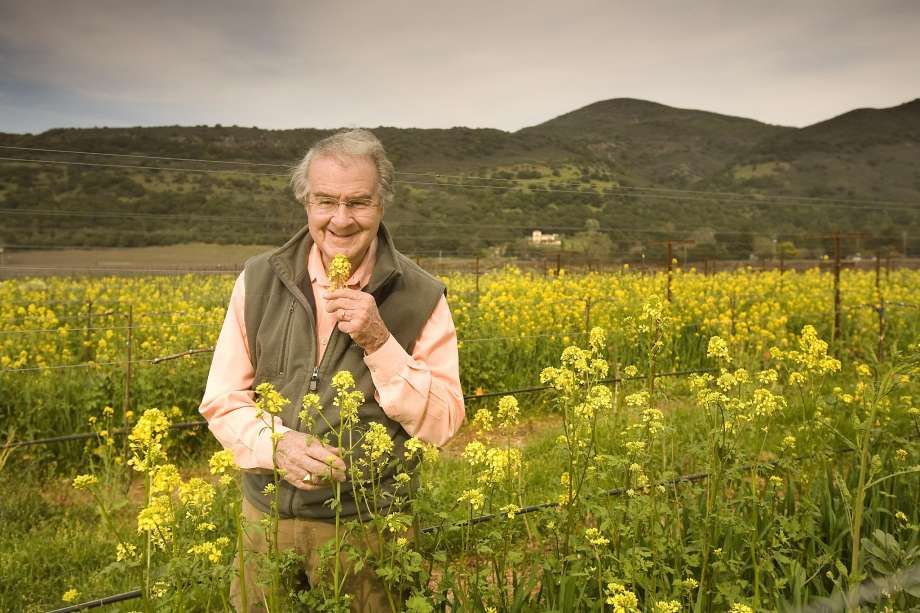
The eureka moment came when tasting Cabernet with Nathan Fay. Realizing that it was possible to achieve a sense of regionality but also strong elements of classic Cabernet style. The original Stag’s Leap vineyard (S.L.V) was purchased and planted 1970. Originally the land was planted in prunes, cherries, walnuts and small amounts of Petite Syrah and Alicante Bouschet. These were all promptly replaced with Cabernet Sauvignon and Merlot. The first vintage of S.L.V. was produced in 1972 in a rented wine making facility.
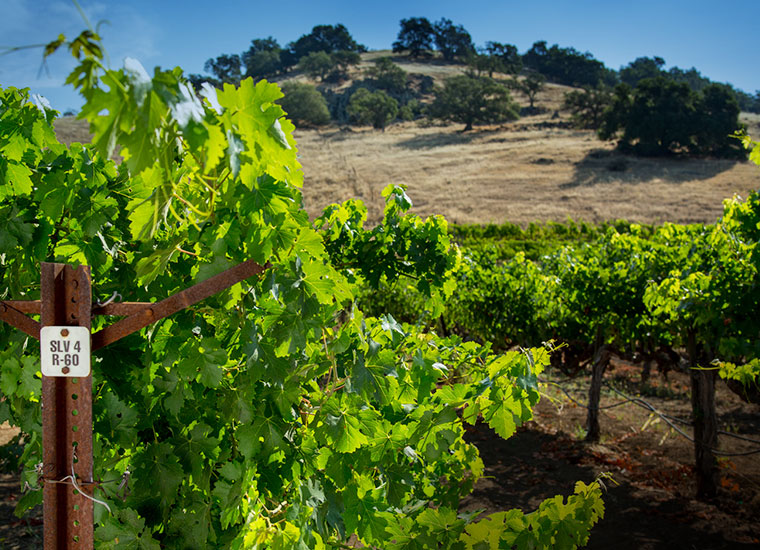
However 1973 was the big one for this young vineyard. The first of the onsite winery buildings were completed and the famous ‘73 S.LV. Cabernet Sauvignon was produced. The following year the first Cask 23 was produced after one lot from the vintage was noted as being a truly outstanding expression by consulting winemaker André Tchelistchef. The life of the vineyard carried on as it had until Steven Spurrier came to visit...
In what is now known as the Judgement of Paris, Steven Spurrier curated a blind tasting of American wines pitted against French wines with a panel of French wine experts. The focus of this tasting was looking at Bordeaux and Burgundy style wines. For the French wines all were First growth or classified-growth including the likes of Château Mouton-Rothschild, Château Haut-Brion, Puligny-Montrachet etc. Whilst on the American front wines from all over California from Napa to Santa Cruz. Needless to say in Cabernet (Bordeaux), Stag’s Leap Wine Cellars pipped all the others.
This revelation in wine changed drinking trends over night! There was increased interest in new world wines regardless of whether or not they had been included in the tasting.
Throughout the 80’s and 90’s the business grew, buying out the neighbouring Fay vineyard and having a bottle of the ‘73 S.L.V. being placed in the Smithsonian. Excavation work also began on the now famous Napa Wine Caves.
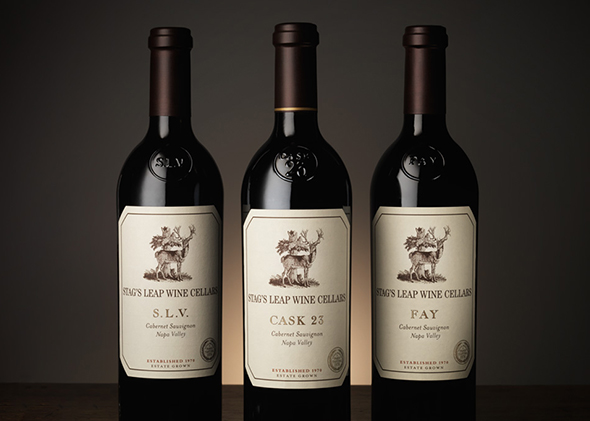
In 2007 after 37 years of stubborn dedication, Warren Winiarski seeded stewardship of his life’s work to a partnership of Michelle Wine Estates and Marchesi Antinori. Winiarski stayed on after this partnership to ensure that all the wines produced still met the prestigious standard historically set.
